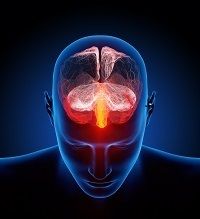Article
Myelination Problems Linked to Migraines
Author(s):
In what he says is the first objective evidence that migraine headaches are caused by defects in the trigeminal nerve's myelination process, a Cleveland, Ohio plastic surgeon shows why migraine surgery works.

In what he says is the first objective evidence that migraine headaches are caused by defects in the trigeminal nerve’s myelination process, a Cleveland, Ohio plastic surgeon shows why migraine surgery works.
Writing in Plastic & Reconstructive Surgery Bahman Guyuron, MD, a plastic surgeon at Case Western Reserve University reported on an analysis of nerve samples taken from 15 migraine surgery patients and a sample from control group of patients who did not have migraine headaches.
In the migraine surgeries, Guyuron removed a 5mm segment of the zygomatic otemporal branch of the trigeminal nerve, a procedure known to stop migraines.
He took a similar set of nerve segments from patients who were undergoing forehead lifts, a cosmetic procedure in which this nerve is routinely transected.
Guyuron then subjected the segments to a proteomics analysis to see what proteins were expressed by the nerves. That enabled him to see that the nerves from the migraine headaches had axonal abnormalities.
“The nerves from the patients with migraine headaches had a linear organization, disrupted myelin sheaths and target axon, and discontinuous neurofilaments that were poorly registered with the discontinuous myelin sheath,” he wrote.
The study showed “the role of peripheral mechanisms in the migraine headache cascade and an
explanation as to why the surgical treatment of migraine headaches is efficacious” he concluded.
Still unclear, however, is whether the abnormalities in migraine patients’ nerves “is a consequence of primary axonal deficit or whether it is the result of myelin disruption,” he wrote. But since surgery is known to work, as does injection of botulinum toxin type A to eliminate or reduce these debilitating headaches, Guyuron hope that his work could lead to less invasive therapies.
Those might include procedures to repair the defective myelin around the nerves, he said.
The work was funded by a grant from the Prentiss Foundation, a charitable trust that supports health care advancement in the Cleveland area.





